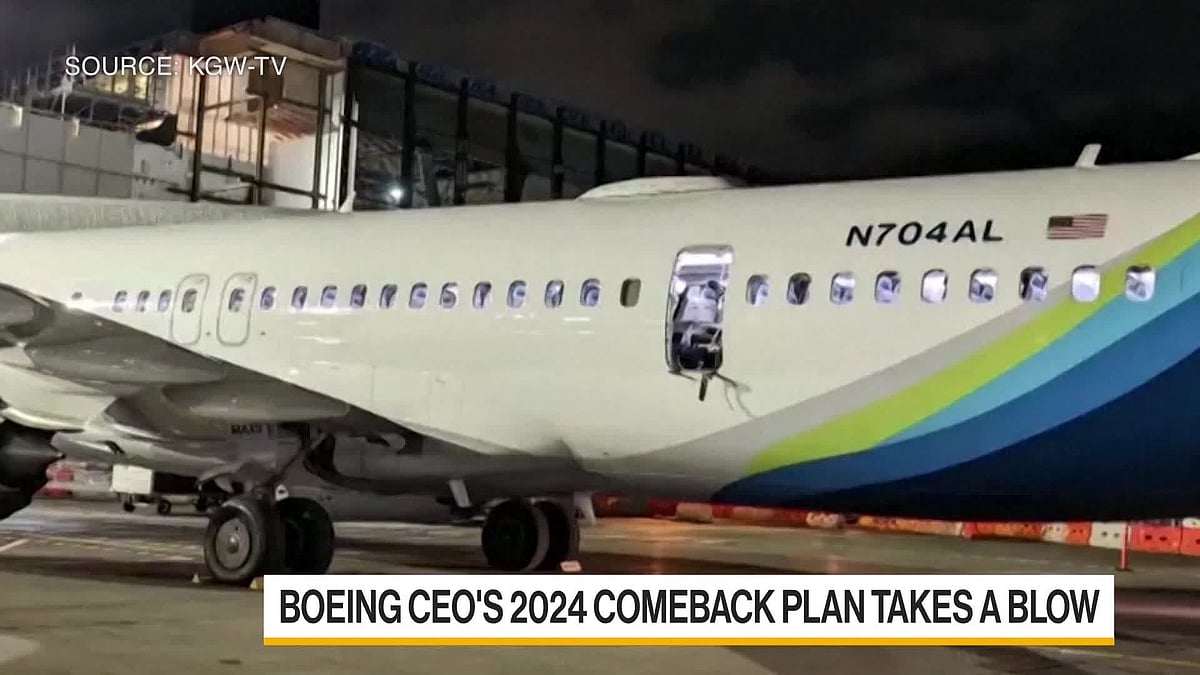Alaska Air 737 Jet Spent Days In Oklahoma For Wi-Fi Upgrade
Investigators are trying to determine what prompted a large panel to eject from a practically new aircraft

(Bloomberg) -- The Alaska Airlines 737 Max 9 jet that suffered a mid-air structural failure on Jan. 5 spent 10 days in Oklahoma City in the previous weeks to receive a Wi-Fi installation at a partner’s base.
The Boeing Co. aircraft, with the tail number N704AL, flew into Oklahoma City on Nov. 27, according to tracking website Flightaware.com, and returned to Seattle on Dec. 7. That’s also the day when the National Transportation Safety Board says the aircraft first displayed a pressurization warning light.
Images of aircraft from Nov. 22 showed the Boeing 737 Max 9 jet without the typical dome antenna used for on-board Wi-Fi service. Photos after the accident reveal a dome just above the walled-off emergency exit opening from which the plug fell out at 16,000 feet, leading to a temporary grounding of much of the 737 Max 9 fleet.
Read More: Boeing Slumps After Panel Blowout Leads to Partial 737 Grounding
Investigators are trying to determine what prompted a large panel to eject from a practically new aircraft, leaving passengers exposed to a gaping hole during flight. Investors have zeroed in on Boeing’s possible role and that of Spirit AeroSystems Holdings Inc., which makes the fuselage for the 737 jet, sending the shares of both companies tumbling.

AAR Corp., an Alaska Air’s maintenance partner, said in a statement that it “did not perform any work on or near any mid-cabin exit door plug of that specific aircraft.”
The company confirmed that it was contracted by the airline to perform a Wi-Fi modification on the jet, carried out from Nov. 27 to Dec. 7. Alaska Air Group Inc., the carrier’s parent company, declined to comment until it obtains necessary NTSB permission to provide information about the aircraft and prior maintenance.
Bob Mann, head of consultancy RW Mann & Co., said that fitting a Wi-Fi dome would probably mean taking off one or two panels adjacent to the spot on the crown of the fuselage where the antenna is mounted and the wiring is fed through.
“They wouldn’t have to take that door plug out,” Mann said.
The NTSB said in a briefing on Jan. 7 that its inspectors want to look into the pressurization system, saying the warning light “is certainly a concern” — and at the maintenance and repair logs to see if there is any link to the accident.
The pressurization lights came on three times between Dec. 7 and the accident, according to the NTSB.
--With assistance from Julie Johnsson.
(Updates with comment from AAR in fifth paragraph.)
More stories like this are available on bloomberg.com
©2024 Bloomberg L.P.